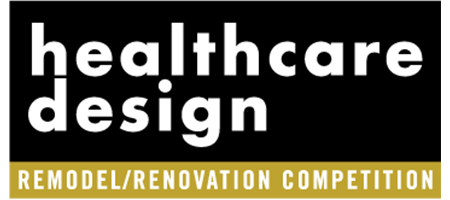
Deborah Ann Franqui (Headshot credit: Courtesy of Bermello Ajamil, LLC)
In today’s healthcare landscape, where clinical spaces often command the lion’s share of design attention, the kitchens, serveries, and dining areas of hospitals quietly shape the everyday experience of patients, families, and caregivers. These spaces, though frequently overlooked, are critical in delivering not just nourishment but also comfort, connection, and a sense of normalcy amid medical uncertainty.
At one leading children’s hospital, a dramatic increase in patient capacity and an urgent need to modernize operations highlighted just how vital these spaces are to the overall healthcare environment. In response, a rigorous research study led by Bermello Ajamil, a Woolpert Company (Coral Gables, Fla.), was launched to better understand how these food and nutrition environments could support clinical, operational and experiential outcomes. This article explores how that research, combined with thoughtful design, converged to transform these essential yet underestimated spaces.
Originally designed to serve approximately 100 patient beds, the hospital was now operating at 278 beds—with a projected 40 percent increase—placing extraordinary pressure on dining services never intended for that scale.
This challenging situation sparked a research study to better understand how these food and nutrition environments could support clinical, operational, and experiential outcomes. Among the study’s goals were to uncover the current space constraints, including undersized areas, waste in the process, separation of key spaces, long travel distances, and high labor hours per meal. The findings would provide a clear baseline for improvement and guide the vision for its future design as part of a new building centrally positioned within the healthcare campus.
The current food and nutrition services, spanning roughly 17,640 square feet, delivered approximately 1,595 meals a day. To meet future needs, the new space, planned at 35,780 square feet, is designed to accommodate 2,295 daily meals.
Additionally, the new space, expected to be completed in 2027, is designed not only to handle the surge in volume but to solve long-standing space challenges and elevate the dining experience across the entire hospital community. It will also accommodate new program components such as a test kitchen, additional food vendors, expanded staff support areas, and larger dining spaces with access to daylight and outdoor gardens.
Unlocking insights through staff surveys
To build a comprehensive understanding of the hospital’s food service operations, two distinct staff surveys were conducted—one focused on capturing detailed kitchen requirements and the other designed to assess staff perceptions across three critical outcome areas: operational efficiency, space efficiency, and user experience.
The surveys revealed clear challenges across all three categories. On the operational side, 67 percent of staff reported dissatisfaction with the layout’s ability to support an efficient workflow, while 61 percent expressed concerns over long travel distances and unclear circulation paths.
Space efficiency emerged as another key pressure point, with 71 percent of staff dissatisfied with overall space allocation, particularly in the preparation and cooking zones. When it came to user experience, the feedback was equally revealing: 39 percent of staff reported concerns about lighting, 60 percent about noise levels, and 57 percent about overall comfort in the kitchen and food preparation areas.
These findings offered vital insights, helping to pinpoint the specific improvements needed to enhance not only operational performance, but also staff satisfaction and well-being within the hospital’s food service environment.
Observations the mapped the daily grind
A series of detailed observations captured critical aspects of daily operations, including food preparation, assembly, staging, and delivery times. The process also pinpointed delays and walking times across key preparation areas, cooking stations, and patient food service lines. Multiple observation methods were employed to build a robust picture of workflow and space utilization. These included facility walkthroughs conducted twice over a four-hour period with guidance from kitchen staff, offering firsthand insights into daily operations.
In addition, 30-minute point-in-time observations were conducted by two observers across multiple locations, generating spaghetti diagrams and heat maps to visualize movement patterns. To deepen the analysis, 12-hour observations were carried out by three observers positioned at various locations throughout the kitchen.
Data collection and analysis tools played a central role in capturing preparation, assembly, staging, and delivery times, as well as time spent walking or experiencing delays. The analysis revealed that a significant portion of staff time was consumed by non-value-added activities, such as delays and extensive walking, key opportunities to improve both efficiency and workflow.
Decoding the floorplan using plan analysis
The plan analysis focused on documenting the utilization and allocation of key areas, including receiving and storage, preparation areas, production cooking stations, and patient service lines. In addition, the assessment extended to staff support areas, the physicians’ dining room, and food service servery and dining spaces. This phase involved calculating the square footage of each area and evaluating the overall layout for functionality and flow.
The analysis revealed clear inefficiencies tied to limited workspace and a lack of direct connectivity between critical zones. Constrained spaces made it difficult to keep essential materials and ingredients close at hand, forcing staff to move frequently between preparation, cooking, and storage areas.
This spatial disconnect not only increased walking time but also led to delays, underscoring the need for a more integrated and efficient design.
Putting kitchen staff productivity under the microscope
To assess productivity, the research team analyzed labor hours per meal and compared these figures to benchmarks established by the Association of Nutrition & Food Service Professionals.
Labor hours per meal—a key indicator of efficiency in kitchen operations—were found to be 0.22, or approximately 13.4 minutes per meal. By comparison, the benchmark target was 0.19 labor hours, or about 11.4 minutes per meal.
The comparison made it clear: the hospital’s kitchen operations fell short by the equivalent of 220 meals per day, signaling critical inefficiencies. Key areas such as preparation, production cooking, and patient food service lines were significantly undersized and disconnected, creating delays, long walking distances, and reduced productivity.
The research not only identified where these inefficiencies existed but also illuminated opportunities to streamline workflows and improve resource allocation. These insights directly informed the next steps.
Designing for efficiency, glow, and well-being
A combination of evidence-based design and LEAN planning strategies guided the project, ensuring that every decision was rooted in data, user input, and best practices. These methodologies were used to drive improvements across operational efficiency, space efficiency, and positive user experience.
To enhance operational efficiency, LEAN workflow strategies were implemented to streamline staff movement and reduce unnecessary steps. Operational processes across preparation, production, patient tray assembly, dishwashing, and formula areas were mapped in detail to identify and eliminate waste.
Travel distances between key zones were measured and compared with those in the proposed kitchen layout. Key strategies included co-locating critical kitchen areas to improve workflow, creating clear and direct pathways between workstations, and incorporating a dedicated elevator for food transport to reduce delivery time and staff movement.
Technology enhancements were also recommended to improve planning, production, and inventory management. In addition, workstations were designed with flexibility in mind, allowing staff to easily adjust to daily volume fluctuations and process changes, with layouts that support cross-functionality between adjacent zones.
In terms of space efficiency, the new kitchen program focused on providing adequate and well-organized areas for receiving and storage, food preparation, cooking, tray assembly, dishwashing, and staff support. Each zone was designed according to industry standard metrics, and existing kitchen work areas were carefully measured and compared to the new layout to assess improvements in size and function. The result was a layout that reduced walking distances, minimized delays, and supported a more productive environment.
Improving the user experience was also central to the planning process. The program introduced spaces that support education and collaboration, including a test education kitchen, a multipurpose training room, and a redesigned doctors’ dining area with a flexible layout that accommodates informal learning and work.
Additionally, an open kitchen concept was adopted to improve visibility and communication between preparation and production areas, reinforcing teamwork and operational flow. Staff training areas were also incorporated to promote ongoing professional development.
Equally important was creating a healthy and uplifting environment. The design includes staff lounges and dining areas with access to daylight and outdoor gardens, as well as healthy food options to promote well-being. Lighting and acoustics were carefully considered, with improvements aimed at reducing ambient noise and supporting natural circadian rhythms in staff workspaces.
Future of healthcare dining
The new food and nutrition services hub is expected to deliver measurable outcomes across multiple dimensions: improved staff productivity, enhanced patient and family dining experiences, and greater operational agility to meet fluctuating demands. Flexible, adaptable workstations will allow the hospital to scale services efficiently, while the introduction of educational and collaborative spaces will support staff development and innovation over time.
By placing research, staff insights, and evidence-based and LEAN planning strategies at the heart of the design process, this project redefines what hospital food and nutrition spaces can achieve. It reminds us that kitchens, serveries, and dining areas are not just back-of-house functions—they are essential, human-centered spaces that nourish resilience, comfort, and healing.
Deborah Ann Franqui, PhD, AIA, NCARB, is the healthcare research lead at Bermello Ajamil, a Woolpert Company (Coral Gables, Fla.) and can be reached at [email protected].












